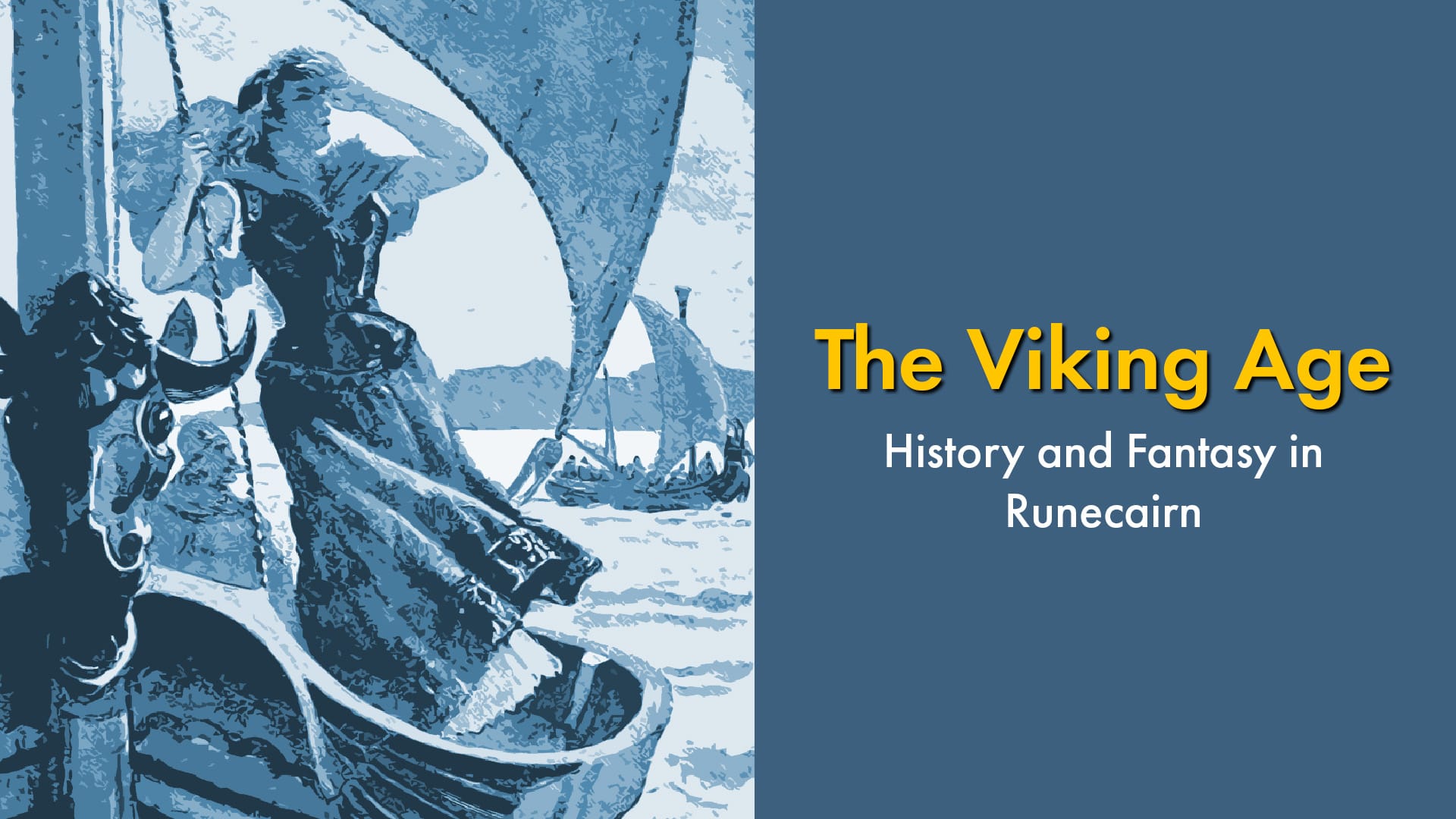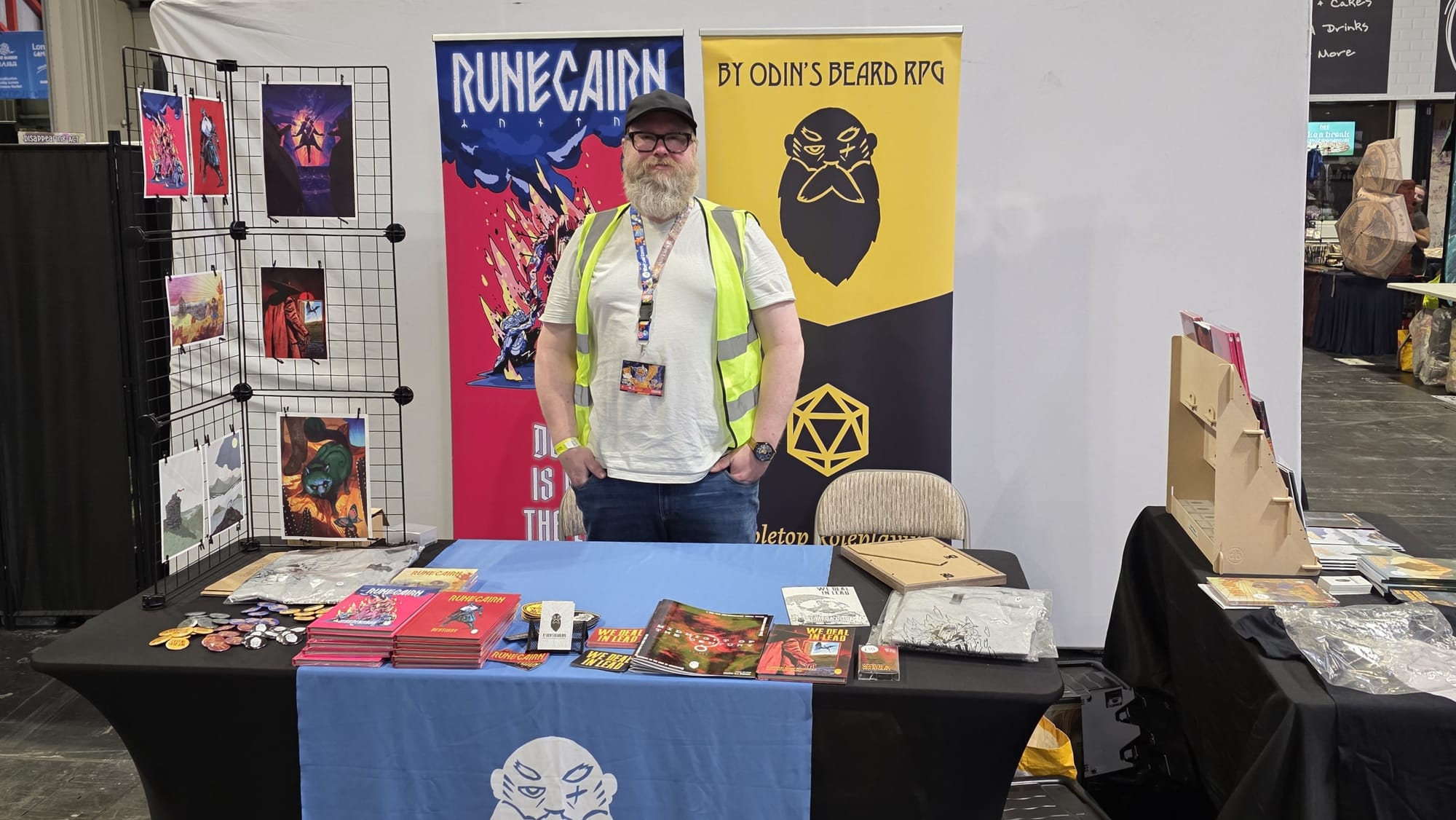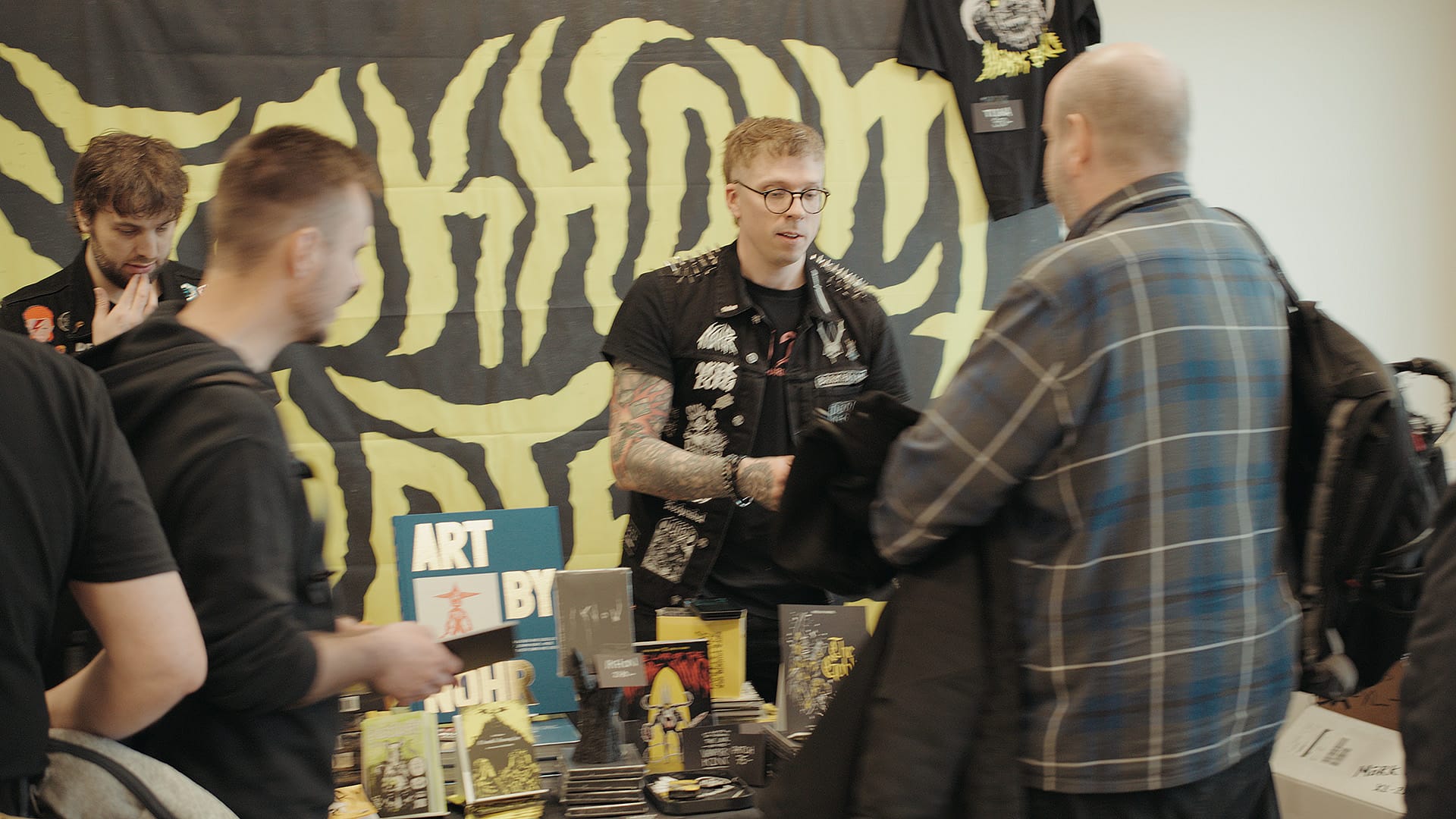
I was listening to the first episode of the Toa Tabletop podcast recently (the new iteration of the Mud & Blood podcast). Liam Stevens (the host) was discussing historical accuracy in tabletop games with professors Shawn Rowlands and Hamish Cameron and it got me thinking again about my design process for the setting of Runecairn, my Norse fantasy TTRPG.
My intention was for Runecairn to be grounded in the historical reality of Viking Age Scandinavia (a period roughly from 800 to 1100 BCE) while also existing in a world of Norse mythological fantasy, complete with magic, monsters, gods, and different realms.
Weapons and Armour
For this historical grounding, this consisted of researching what types of weapons and armour were actually used in the period and choosing the most interesting and evocative. I'm not a historian and so took some creative licence but I stayed within the rough boundaries of verified historical research and documented sources like the Icelandic sagas (though the sagas were mostly written hundreds of years after the fact and have their own biases and weaknesses).
This resulted in a list of common and rare weapons (such as the bearded axe and seax) and armour (such as reindeer hide and quilted cloth). I did indulge in embellishment around things like two-handed swords (they didn't really exist in this period) and bear- and wolf-skin headdresses (there's no evidence berserkrs actually wore these) but these aren't totally unbelievable and add an extra flavour and variety.
Magic
For magic and spells, I initially split these into two categories based on classic OSR tropes: arcane and divine.
Arcane
The concept of magic in the Viking Age normally refers to seiðr, a form of future telling and shaping. This magic was typically associated with women called vǫlur and prescribed a feminine trait (men practiced seiðr as well, though there's a stigma associated with this).
I mapped the concept of seiðr onto the mage/wizard archetype and called this the seer starting class. Rather than spellbooks, seers use runestones inscribed with spells to cast their magic. This isn't historically accurate (as runestones weren't actually associated with magic but often used as memorials or markers) but aligns well to OSR mechanics.
Divine
I knew I wanted a cleric class (to go along with the other archetypal classes warrior, thief, and mage) but there was no obvious equivalent in the pre-Christian Viking Age. I looked at the figure of a goði, which was essentially a religious/political leader, and extrapolated this into someone who translate and speaks the will of the gods. I took this a step further and (combined with the concept of language as magic from Elder Scrolls) made this into a skald, a combination cleric/bard who casts divine magic in the form of spoken sagas.
Diversity
One of my goals is to highlight the fact that Viking Age Scandinavia was not a monoculture and had diverse influences from around the world. There's a persistent and worrying myth that Norse cultures in the Viking Age (by the way, Viking was a profession, not a culture) were homogeneously light-skinned and fair-haired; this is objectively false and speaks to dangerous and despicable beliefs by far right and white supremacist groups. Viking war bands traded with and recruited members (often through slavery/thralldom) from different cultures. Slavery/thralldom was a significant element of Viking Age society but I didn't feel it appropriate to include in Runecairn, though this risks whitewashing history.
In the first printing of Runecairn, I had some character trait options in the Appendix for dark or tanned skin. One of my reviewers (thanks Sebrina!) pointed out this suggested white or pale skin was the default, so I updated it to be more inclusive, along with removing the distinction between male and female names.
Although there are interesting discussions to be had around gender in the Viking Age, I've tried to make Runecairn gender neutral. For an excellent TTRPG examining gender roles and toxic masculinity in Norse culture, check out Blood Feud by Bläckfisk Publishing.
Fantasy and Mythology
In my head, the world of Runecairn is separate from the real historical world, but heavily informed by it. Does it take place on Midgard (Earth) but in an alternate version with magic and gods? Or does it take place in Asgard (the home of the Aesir gods)? Every table that runs Runecairn can have a different interpretation, be it low fantasy, high fantasy, or science fantasy.
Accuracy vs. Fantasy
I never sought to make a 100% historically accurate game, but I did want to make something that wouldn't be glaringly, obviously incorrect and would be fun to play for history and fantasy fans alike. I like to think I struck the right balance between historical accuracy and fantasy embellishment and the option is always there for Wardens and Adventurers to tweak this from one side to the other.
- Illustration by George Roux





